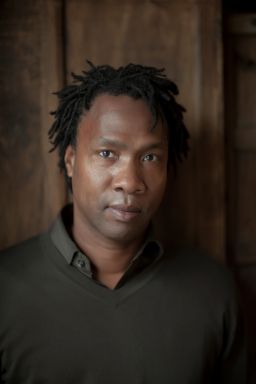Editor’s Note: Roger Ross Williams is an African-American filmmaker whose short film “Blackface” debuted on CNN Digital in November 2015. Williams also directed the Oscar Award-winning short documentary “Music by Prudence” and the documentary “God Loves Uganda,” which premiered at the 2013 Sundance Film Festival. He resides in Amsterdam with his husband.
Story highlights
Roger Ross Williams says he was shocked by the Dutch Black Pete tradition
Every year, Dutch people in the notoriously liberal country put blackface on as part of the holiday rite
The first time I saw the Dutch character known as Black Pete, or Zwarte Piet, my heart sank and I felt a little nauseated.
For three agonizing weeks, many nonwhites (including myself) watch white Dutch people paint their faces black, their lips red, wear afro wigs, hoop earrings, and act like a bumbling and dimwitted servant who is kind to children.
It’s all part of a Dutch tradition that takes place during the Netherlands’ most popular holiday, Sinterklaas.

Sinterklaas arrives by steam ship from Spain around mid-November, along with his servants called Black Petes. The Black Petes give candy to the children and on December 5 – the night before St. Nicholas Day – go down the chimney and deliver presents before heading back to Spain.
This has similarities to Christmas in the United States, but the Dutch celebrate both Sinterklaas and Christmas. The idea of the Black Petes dates back to a children’s book published in the 1850s called “Sinterklaas and his Servant.”
The Dutch call it a fairy tale, but many nonwhites in the Netherlands call it a nightmare. They pull their kids out of school because they don’t want them to grow up feeling that to be black in Dutch society is to be subordinate, inferior and an object of mockery.
Most Dutch people do not believe that Black Pete is racist. They say he is just a fun character for the children. I know it sounds crazy, but they say he is a happy helper of Sinterklaas who loves being his servant.
“They don’t know what our tradition is,” Jan van Wijk, chairman of the Dutch Saint Nicholas Society, says of Americans who think Black Pete is racist. “In the history, there (is) a good man – Santa Claus – and there is an enemy, a devil, and the devil is black.”
Black Pete, van Wijk explains, is transformed from an angry, black man to “a person who is friendly.”
“Black Pete is not racism, Black Pete is not a slave, he is the friend of everyone,” he says.
What they do not realize, or care to see, is that the idea of Black Pete himself is rooted in slavery. And what they fail to notice is that some of the nonwhite kids aren’t laughing. Schools in the Dutch cities of Rotterdam, The Hague and Utrecht have begun to ban Black Pete, and the Amsterdam school system has issued an advisory against it.
But, in the rest of the Netherlands, Black Pete is alive and well and some say is even having a renaissance of sort. Many Dutch have dug in their heels against a growing protest movement.
There is something deeply unnerving when you see such a blatant display of racism head on – that my appearance as a black man can actually be someone’s caricatured costume. It’s hard to believe that it’s 2015 in the Netherlands, a country that many believe is enlightened and progressive.
When I decided to make “Blackface,” a short film about Black Pete, I had little knowledge of the giant cesspool of hate I was about to dive into. I didn’t realize how popular and passionate many white Dutch are about a figure that they connect to fond memories from their childhood.
They call it their culture, their tradition, and most are not willing to let it go. They feel passionate about it.
They ignore that Black Pete is a common Western stereotype of people of African descent, just like Little Black Sambo and Al Jolson in the United States or Tintin in the Congo and in France. Those figures were used to reinforce European white supremacy fresh off the heels of slavery.
This is Black Pete’s legacy, and it cannot be divorced from history or from contemporary racism and xenophobia that persist in the Netherlands today, where Dutch politicians such as Geert Wilders engage in openly anti-immigrant rhetoric. Studies claim that nonwhite Dutch communities face substantial discrimination here. So, racism in the Netherlands is not just evident in the blatant face of Black Pete, but also in less visible ways.
I know this firsthand because as word got out that I was making a film about Black Pete, my email, Facebook and Twitter feeds were flooded with messages claiming that I had no business interfering with their innocent children’s holiday, telling me that I did not understand.
They would start off saying that Black Pete is not racist and end by calling me a “stupid Black Monkey who should go back to Africa.” That’s when I realized that the Black Pete debate has hit a nerve in this country. It has reminded the Netherlands of the very significant role it has played in the slave trade, and of inequalities that it has benefited from.
Maybe the reluctance to change is because of guilt – but I think it’s much more than that. I think that the Dutch have such deep-rooted white privilege that they actually have no way to connect to those outside of their reality. Their idea of themselves is based in centuries of brainwashing, which has told them that they are superior to the brown and black people of the world.
They live in a country literally built on the backs of oppression. They cannot see the pain of their own nonwhite citizens, and they do not want to see it. The rest of the world does, and even the United Nations had to intervene and issue a statement from the committee of racial discrimination: “Considering that even a deeply rooted cultural tradition does not justify discriminatory practices and stereotypes, the Committee recommends that (the Netherlands) actively promote the elimination of those features of the character of Black Pete which reflect negative stereotypes and are experienced by many people of African descent as a vestige of slavery. The Committee recommends that the State party find a reasonable balance, such as a different portrayal of Black Pete and ensure respect of human dignity and human rights of all inhabitants of the State party.”
The ties to racism seem pretty clear when I open my inbox and see the word “nigger” from a pro-Black Pete Dutch person.
I’m told that I should focus on the racial problems in my own country, instead of meddling in their innocent children’s holiday. My answer to them is that the racism in the United States does not give them to right to ignore their own racism.
All racism is wrong, and denying that it exists does not make it go away. In the Netherlands, there is a population of nonwhite people who, more and more, refuse to be treated as second-class citizens anymore.
There is a change happening, and it feels like an exciting time to be here and be a part of it – even if it is painful at times to experience.






